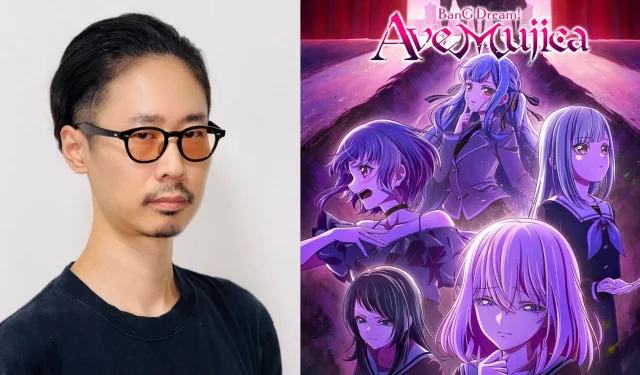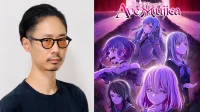The BanG Dream! franchise is widely celebrated for its remarkable animation and compelling narratives. The latest installment, Ave Mujica – The Die is Cast, is making a significant impression as one of the standout animes of Winter 2025. This series continues the legacy of its predecessor, It’s MyGO!!!!!, showcasing a blend of high-quality 3D animation and innovative CGI techniques crafted by Studio SANZIGEN.
Insights into Production: Directors Discuss SANZIGEN’s Animation Techniques

As Ave Mujica – The Die is Cast gains traction both domestically and internationally, its animation has received widespread acclaim. In this regard, Okugawa-san provided an in-depth exploration of the complex animation process utilized in the series.
“Director Kakimoto and the scriptwriting team manage the overall structure, while I primarily address the aspects concerning CGI animation.”
He further explained,
“The workflow generally aligns with standard processes in Japanese CG animation.”
The CGI and Storyboard Supervisor granted us exclusive access to behind-the-scenes materials, revealing a detailed overview of rendering CG panels throughout various stages of production. The animation journey commenced with pre-production, which included setting design, modeling, rigging, and storyboarding. During this phase, as illustrated in Image 1, initial rough 3D data was collected to guide storyboarding efforts and to lay a foundational basis for subsequent production phases.
The following step involved the Layout stage. Here, as depicted in Image 2, team members ventured to real-world locations to capture reference photos for specific scenes. These photographs were then meticulously processed to develop realistic backgrounds.

From there, a rough composition was created drawing from the storyboard, character poses, and facial expressions (Image 3). This phase established the visual layout of the background, providing direction for background artists.
Transitioning into the Primary Animation phase, the focus shifted to animating character poses, where critical visual elements—including camera angles—were refined as presented in Image 4. At this juncture, dynamic effects, such as rain cascading over characters, were implemented, responding to their movements.
The Secondary Animation phase then fine-tuned the visuals by adjusting colors for specific scenes and adding realistic movements to elements like hair and fabric. Adjustments were made without altering the original poses (Image 5).
The animation pipeline also included the Tertiary Animation and Proofchecking stage dedicated to error rectification and quality assurance before finalizing the project, as demonstrated in Image 6.
The concluding steps in the animation process involved Photography and Editing, wherein post-processing effects like rain animations and lens flares were applied to elevate the final imagery. Image 7 showcases a completed scene featuring the character Sakiko as it aired in the episode.
Okugawa-san noted,
“For backgrounds not created via CGI, we engage specialized companies to produce high-quality background artworks after the layout stage concludes.”
He further elaborated on a distinctive characteristic of the production:
“A unique aspect of our work is that It’s MyGO!!!!! and Ave Mujica are sequels in the BanG Dream! anime universe. With this, we began production with a solid base of settings, knowledge, and a library of CG assets to draw upon.”
Addressing the returning characters from It’s MyGO!!!!!, Okugawa-san continued:
“While we aspired to reach the highest visual quality within our technical and budgetary boundaries, traditional hand-drawn animation still holds an advantage in intricate visual expressions, something CG finds challenging to replicate.”
He further commented,
“Nonetheless, CG animation excels in maintaining visual consistency and conveying subtle emotional nuances. Given that Ave Mujica – The Die is Cast emphasizes drama and character interaction, we leveraged these strengths to craft a compelling viewing experience.”
Okugawa-san added,
“By acknowledging CG animation’s strengths and limitations, we ensured the visuals conveyed Director Kakimoto’s narrative intent without detracting from the overall storytelling.”
“Thus, I believe the series resonated even with audiences unfamiliar with CG animation.”
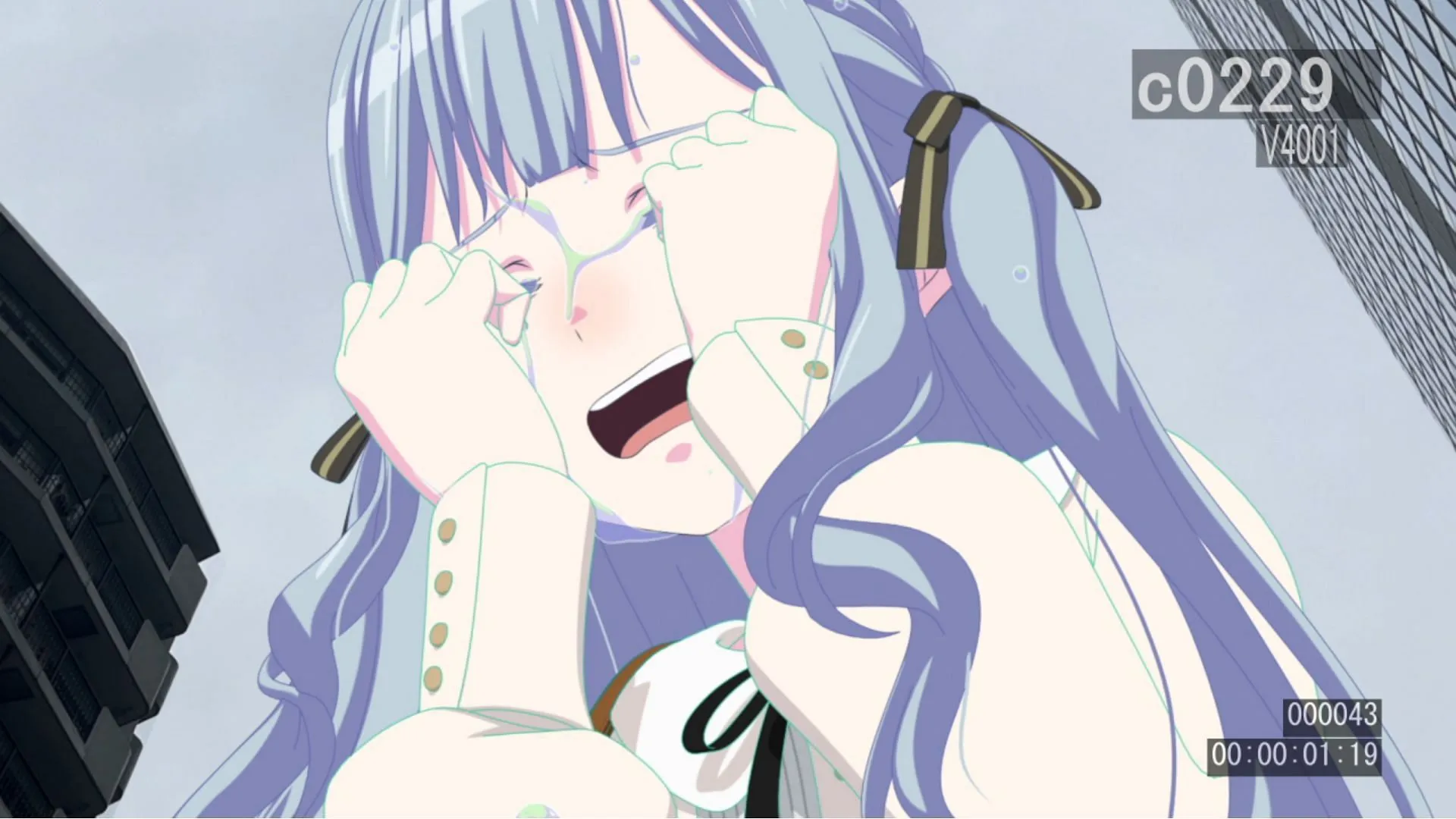
Morita-san provided his perspective on the approach:
“We modeled our animation process around traditional hand-drawn Japanese methods, working rigorously to eliminate any overt ‘CG appearance.’ Our aim was to marry the flexibility of CG—especially in costume design and dynamic camera work—with the strengths of hand-drawn animation.”
When queried about any unique methods SANZIGEN utilized beyond standard CG practices to create seamless animation, Okugawa-san revealed:
“We didn’t employ any groundbreaking technology beyond what is conventional in CG animation. However, we placed a stronger emphasis on lighting to enhance artistic expression, relying on established techniques for implementation.”
“In addition, we have an in-house team focused on retouching and blending hand-drawn components, fostering close collaboration to ensure exceptional visual quality.”
“Post-processing effects also played a vital role in enhancing the overall aesthetic, introducing vibrancy and polish to the final results.”
Morita-san added this note:
“Live performance segments rely heavily on motion capture, but simply transferring motion capture data to 3D models doesn’t yield top-tier animation. Manual refinement is essential to achieving the fluidity and expressiveness of hand-drawn movements.”
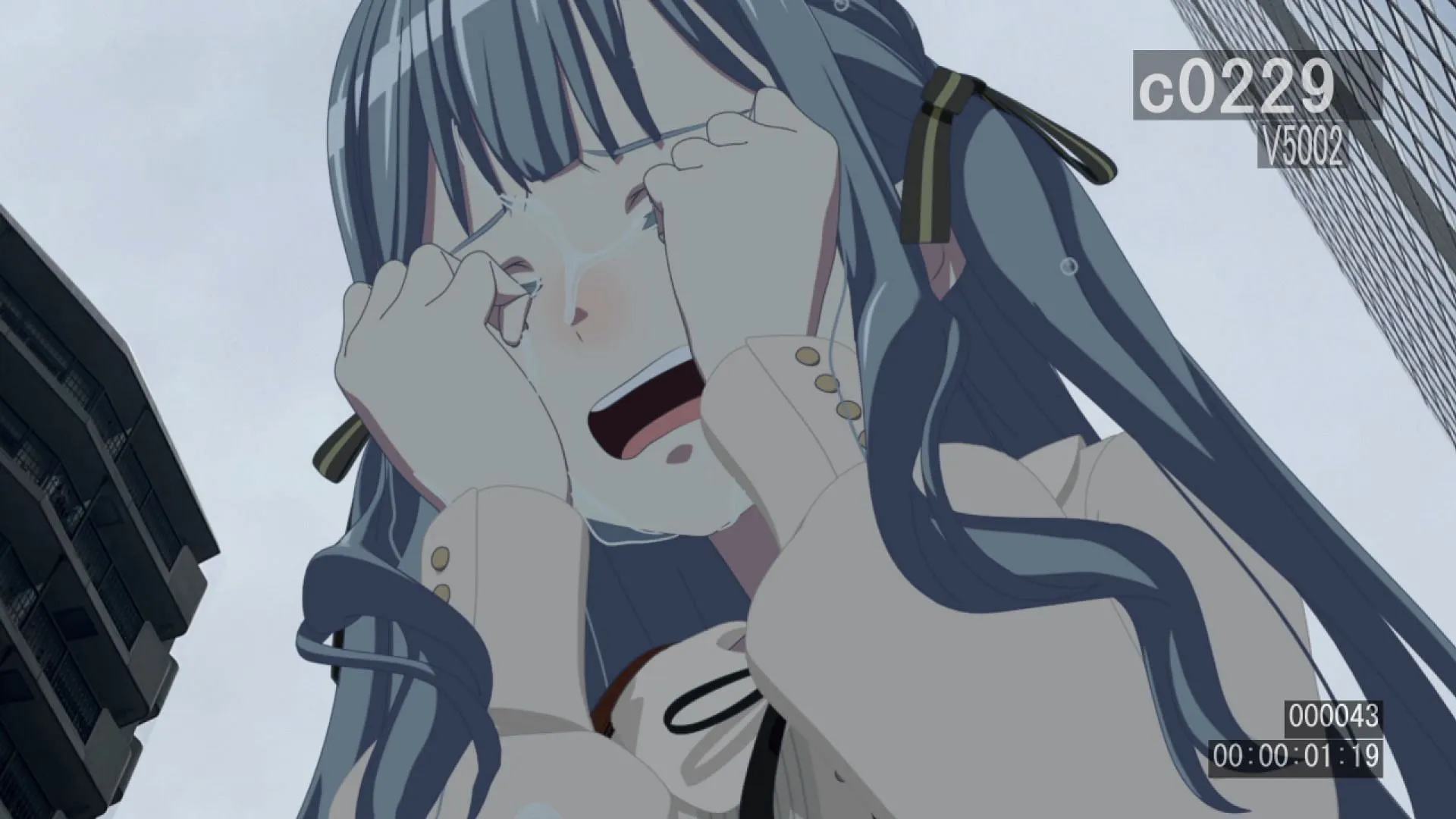
This led to a broader discussion on effectively merging CG and traditional animation techniques to enhance visual storytelling. Okugawa-san elaborated on the studio’s integration approach and its effectiveness.
They also shared thoughts on the increasing shift towards CG in anime, reflecting changes in the industry.
“One of SANZIGEN’s key missions is to create a hybrid of CG and traditional animation—bringing CG closer to the essence of hand-drawn styles while adapting hand-drawn elements into CG productions. This distinctive goal differentiates us from other studios.”
“Our ultimate objective is not for CG to entirely replace hand-drawn animation. Each technique possesses its own strengths and weaknesses, and we believe the optimal path is a harmonious coexistence.
Morita-san further stated:
“Many of SANZIGEN’s storyboard artists utilize CG to work within a 3D virtual space, facilitating camera placement and composition design. This method enhances cinematic realism and immersion.”
“Ultimately, whether a scene is hand-drawn or CGI is secondary. These are merely storytelling tools, and the emotional impact remains the same for viewers.”
“It’s likely that hybrid techniques, blending the best of both worlds, will become the industry standard. In fact, we’ve begun incorporating hand-drawn enhancements into our workflow to elevate the quality of our visuals.”
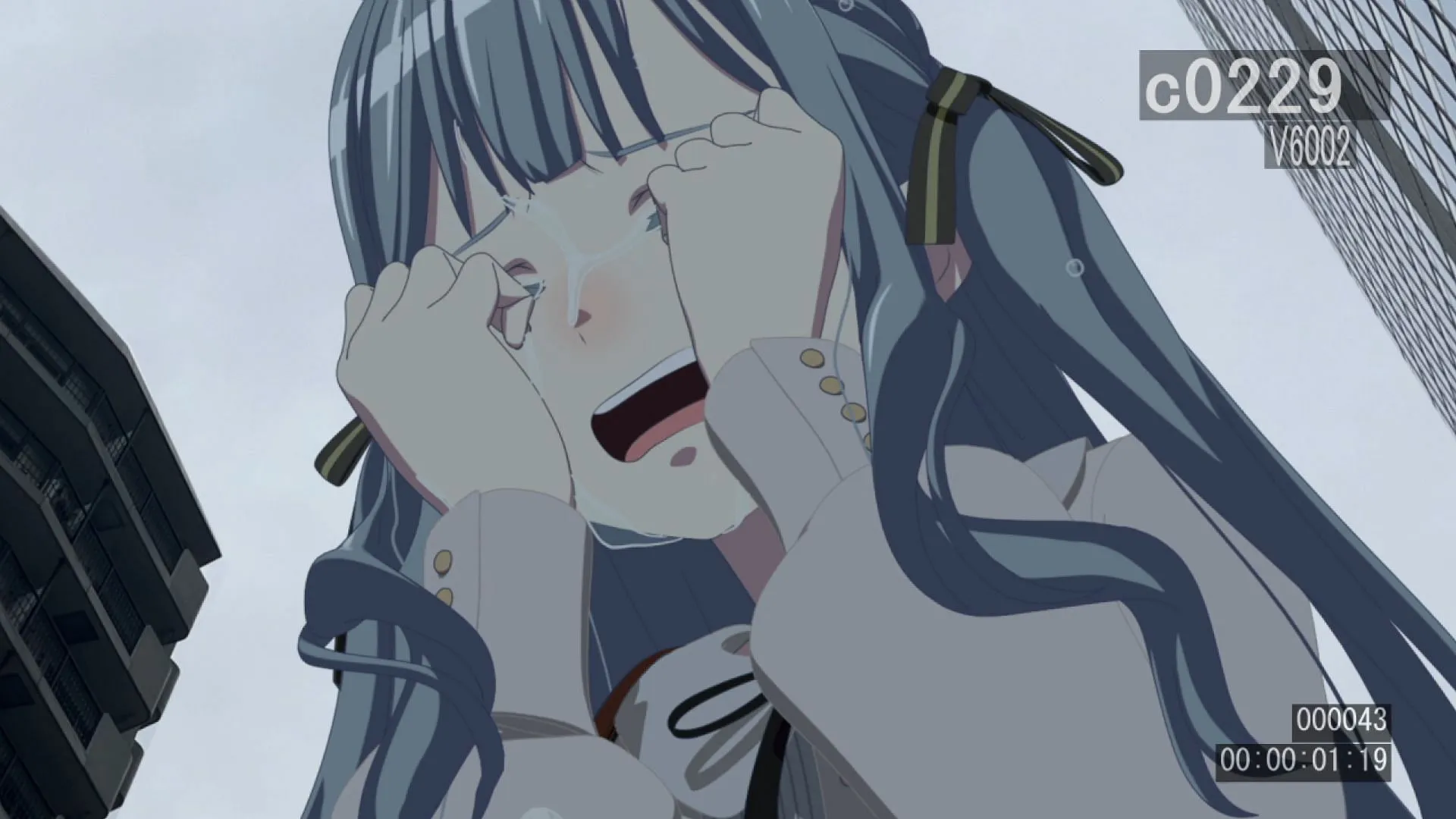
We explored the challenges of portraying character emotions and complex scenes through CG animation in Ave Mujica – The Die is Cast. Okugawa-san shared insights:
“Conveying character emotions strictly through CG is often a hurdle. In Ave Mujica – The Die is Cast, we often resorted to traditional hand-drawn elements for significant close-ups.”
“Depicting intricate live performance sequences using CG poses its own set of challenges, but I believe it’s still less complex than achieving similar results in hand-drawn formats.”
Okugawa-san identified the most intricate scenes to animate:
“The theatrical performance scenes were the most challenging, as structuring the acting and visual presentation required considerable effort from animators to successfully capture the performances.”
In response to this, Morita-san remarked:
“During scenes of heightened emotion, relying solely on CG controllers may not suffice to convey the nuances. In such situations, we deform the 3D models or incorporate hand-drawn touches to amplify expression.”
“This process heavily depends on the animators’ skills, with director guidance being paramount to achieve the intended conveyance.”
“Conversely, depicting complex live performance setups is an area where CG truly shines.”
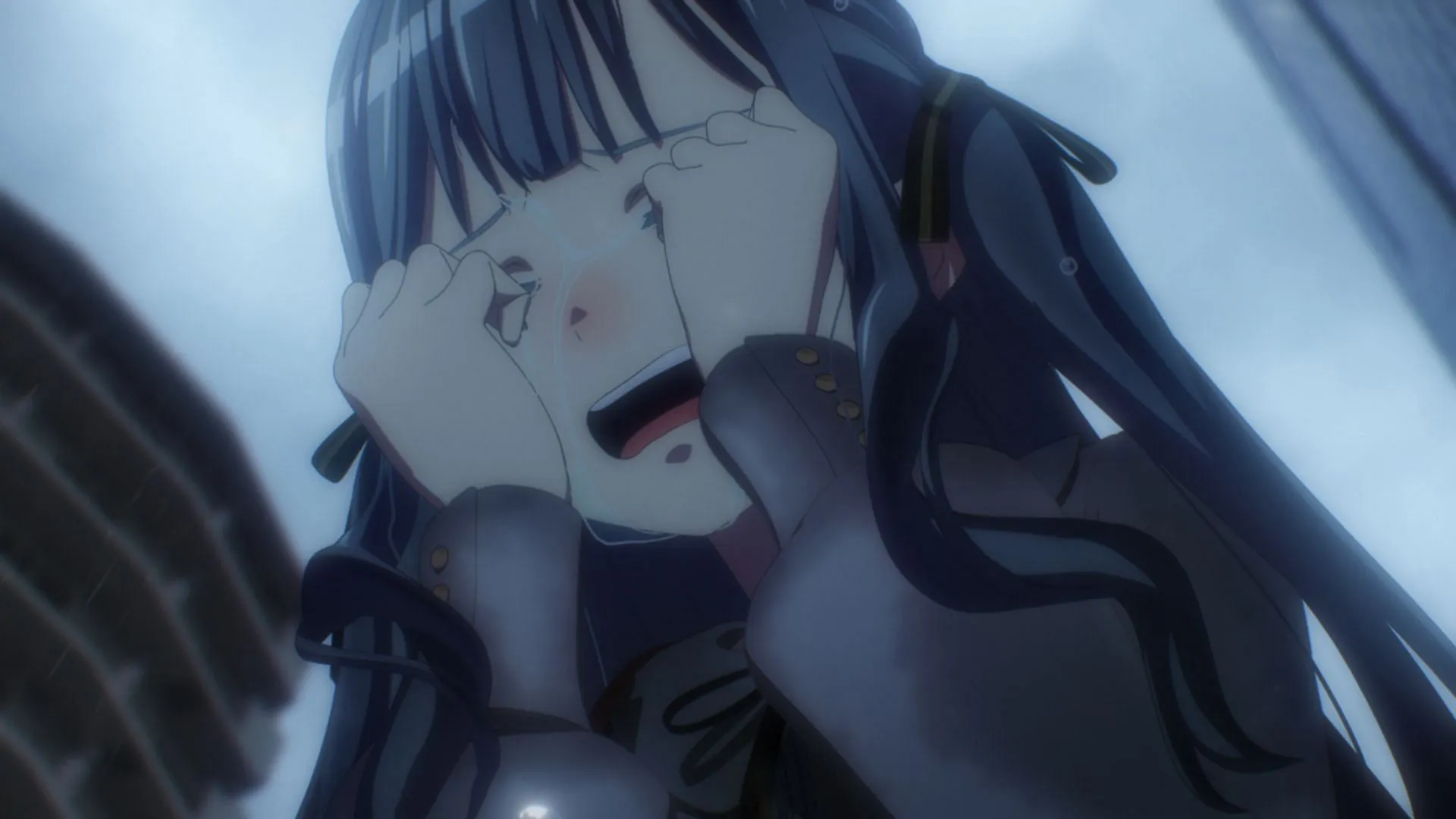
When discussing the easiest and most challenging aspects of CG in the creation of Ave Mujica – The Die is Cast, Okugawa-san noted:
“The straightforward facet of CG animation is the enhancement—adding elements and details.”
“The most difficult part, however, is knowing when to eliminate certain aspects to refine expression. Achieving that balance is vital for effective visual storytelling.”
According to Morita-san, the most complex and least challenging elements of CG animation in the series are:
“A significant challenge lies in maintaining consistent perspectives within CG animation. However, a key advantage of CG is that it guarantees a basic level of visual quality, preventing animation inconsistency. (Commonly referred to as ‘bad animation.’)
He added that a specific element often poses difficulties in CG animation, which tends to fascinate fans of Japanese animation:
“The challenge of depicting eating scenes is particularly pronounced. Creating appetizing food representations in 3D is exceptionally difficult.”
“Furthermore, as these require painstaking attention, including bite marks or cut sections, it is both challenging to portray convincingly and costly to produce, leading us to avoid it whenever possible.”
Okugawa-san provided further clarity on the responsibilities of CGI animators and directors in Ave Mujica – The Die is Cast along with their personal experiences:
“CGI animators have a range of responsibilities centered around completing their assigned tasks, while CGI directors share that responsibility but also negotiate and coordinate among team members.”
“Episode directors at SANZIGEN often serve dual roles as CGI directors, expanding their duties to encompass directing the execution and presentation of content.”
He expressed his perspective on these roles:
“From my experience in SANZIGEN’s creative environment, it’s evident to me that roles are often progressive in nature. However, I believe individuals without animation backgrounds can also become successful episode directors.”
Similarly, Morita-san provided his personal journey:
“During my time as an animator, my focus was on ensuring my assigned cuts were executed flawlessly. I dedicated significant effort to creating expressive character performances.”
“However, as a director now, I realize that this singular focus isn’t always optimal. In filmmaking, the balance between ‘stillness’ and ‘movement’ is crucial, and it’s the director’s responsibility to maintain that equilibrium.”
“Being a director does not necessitate being an outstanding animator; rather, it requires the ability to recognize and manage an overall balance effectively.”
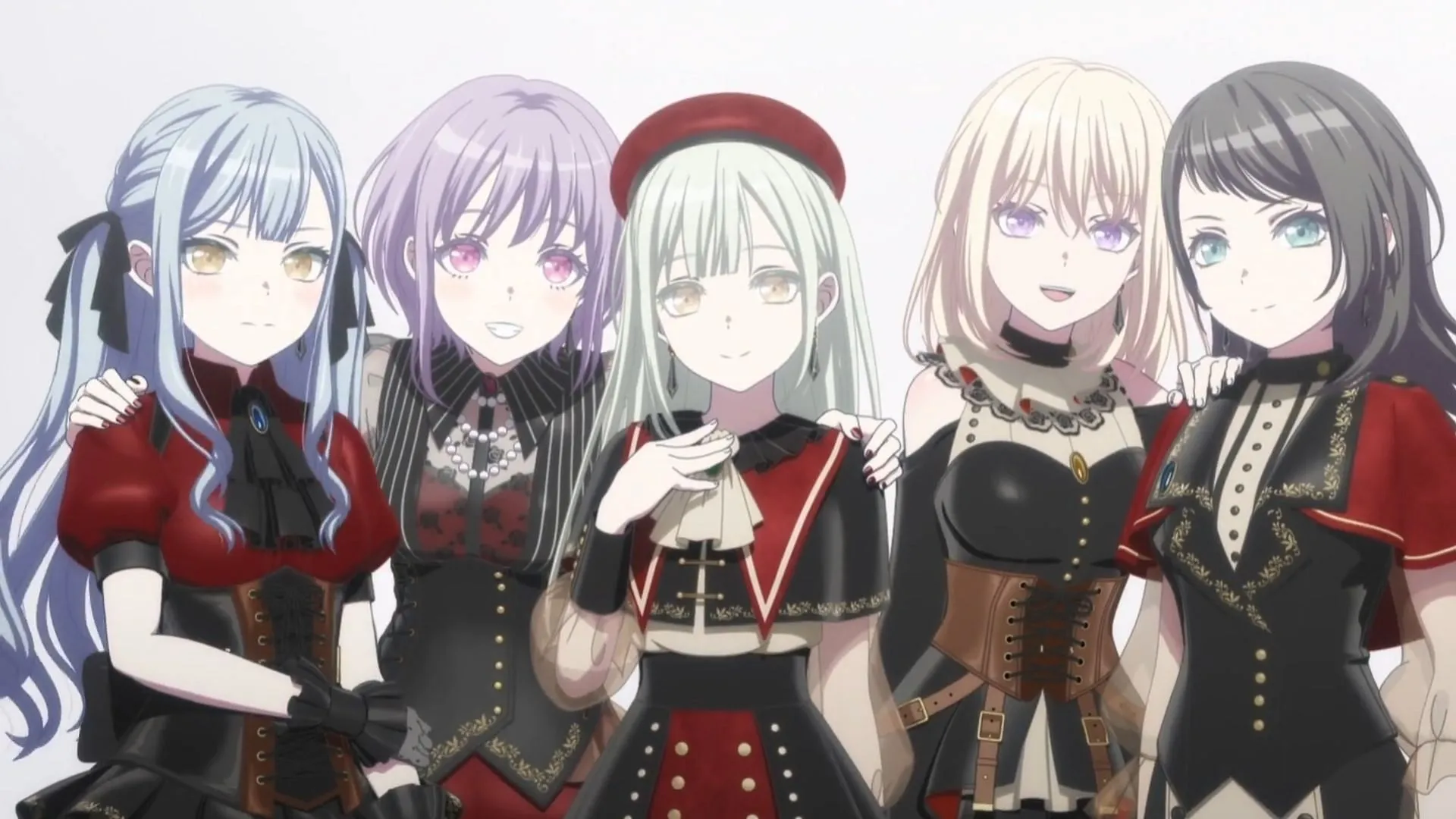
Morita-san also reflected on how his experiences have reshaped his understanding of roles and how SANZIGEN integrates them into a unified workflow.
“Previously, unsynchronized freelance episode directors who focused on traditional animation often relied on CGI directors to bridge gaps in understanding 3D production. However, with in-house episode directors, these roles have become more aligned.”
Shifting the focus from animation and production, we probed their insights on Ave Mujica – The Die is Cast as a music genre anime, highlighting what sets it apart from its peers and its unique qualities.
In Okugawa-san’s view,
“Many music-themed anime unfold majestic dramas, culminating in resolutions where characters unite through music and harmony.”
“Contrastingly, in Ave Mujica – The Die is Cast, while characters bond over their shared band experience, each grapples with individual struggles and thoughts. They embark on live performances while still navigating their emotional challenges.”
“Music can bridge complex emotions, yet it doesn’t fully unite individuals. Most of their personal issues remain unresolved as they navigate life alongside their unaddressed struggles. This raw realism is a central theme we aimed to portray.”
He elaborated that this authentic storytelling approach distinguishes Ave Mujica – The Die is Cast by making it relatable to audiences, providing deeper emotional connections to the characters.
“This technique fosters character depth and authenticity, engendering empathy among viewers while generating anticipation for the unfolding narrative.”
He continued,
“Another defining trait is how clearly we outline the characters’ motivations, allowing viewers to easily anticipate their thoughts and actions, while still ensuring the drama’s unpredictability.”
“In retrospect, audiences can understand and accept the motives behind these actions, akin to piecing together a mystery. This narrative structure is highly engaging.”
“Moreover, the inclusion of live performances featuring voice actors authentically performing as the characters differentiates this project from other content.”
Morita-san’s thoughts shifted toward the psychological dimensions in the series.
“Few narratives delve as deeply into psychological thrillers as this one, with a rich vein of complexity present throughout.”
“This observation applies broadly to the entire BanG Dream! project, where the anime does not shy away from depicting performance scenes realistically, enhancing its overall appeal.”
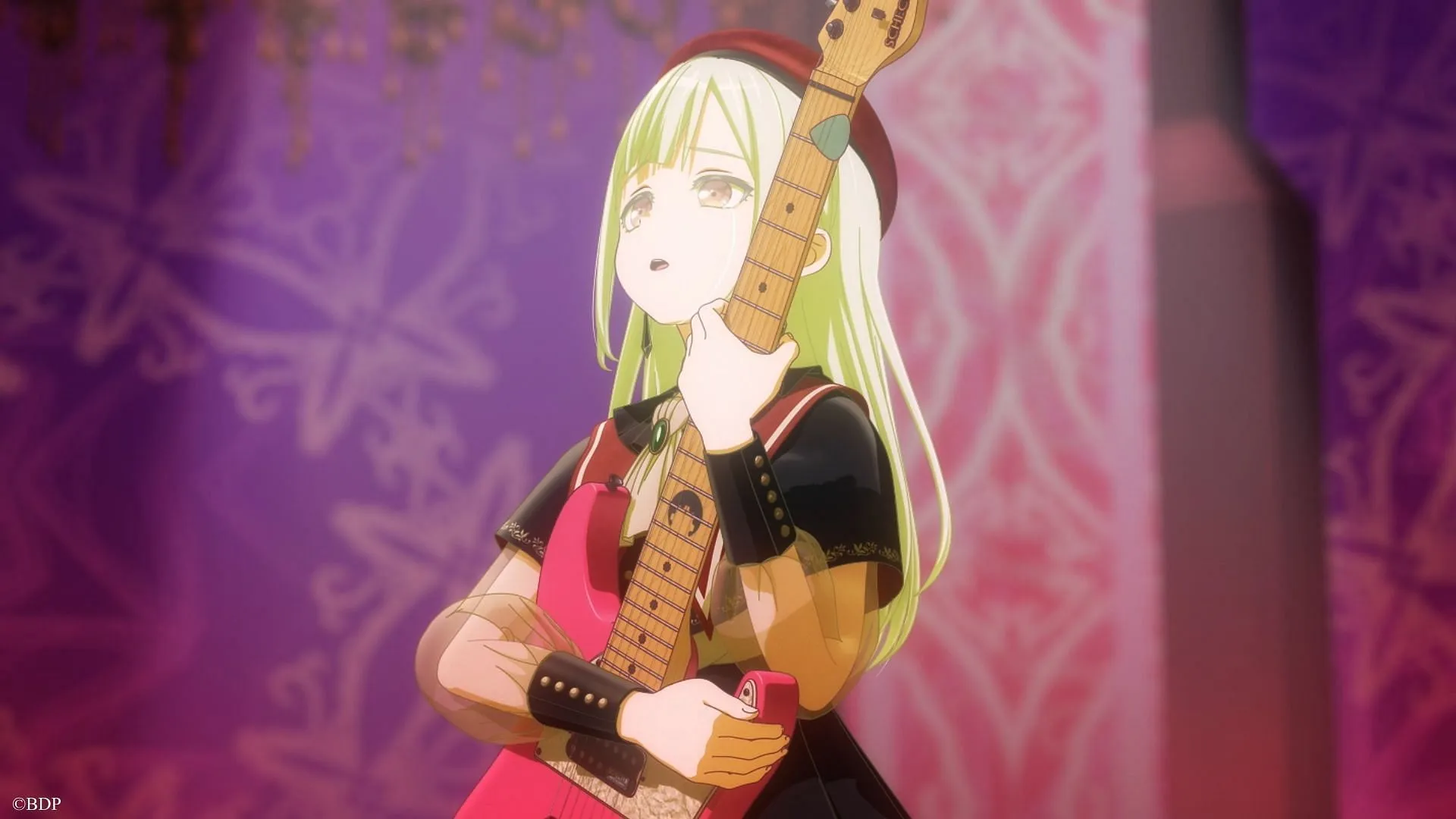
We concluded by asking directors about their personal favorite moments from Ave Mujica – The Die is Cast, along with their significance. Okugawa-san highlighted:
“The poignant scene in episode #1, where Sakiko, after leaving CRYCHIC, walks to the station in the rain, overwhelmed with emotion, is particularly vital. It unveils a hidden layer of the CRYCHIC narrative that had remained obscure. Naturally, I have a personal connection as I storyboarded that scene, and the animation team’s quality is outstanding, making it dark yet beautiful.”
He continued,
“The power of the voice acting also leaves a significant impact, and witnessing that scene brought an emotional response, even moving Director Kakimoto to tears.”
Conversely, Morita-san expressed:
“In episode #4, the moment where Nyamu tells Mortis, ‘You shouldn’t be here,’ carries considerable weight. This line signifies Nyamu’s acknowledgment and respect for Mortis’ talent. We conveyed this emotion exceptionally well through her expression.”
We concluded with behind-the-scenes revelations and insights about Ave Mujica – The Die is Cast that fans would appreciate.
Okugawa-san shared intriguing facts about the anime:
- Each character maintains an evolving internal list of names, encompassing various nicknames as relationships develop.
- The chase scene in episode #6 featuring Mortis was originally crafted for Ave Mujica, later integrating backgrounds utilized in a previous theatrical compilation film. Additionally, designs of the Disruption members were based on those from Ave Mujica.
- For scenes set against real-life backdrops, team members would travel to capture photos for storyboarding before sending them for review, sometimes across distances (e.g., the Chitose Bridge where Tomori and Sakiko met).
- The studio president encouraged elevating the quality of background characters, leading to the addition of finer details within budgetary limits.
- Originally clutter-free, Mutsumi’s room after Mortis entered was modified to reflect chaos, depicting torn curtains and an overturned dresser for visual impact.
Morita-san revealed a notable scene from episode #4 featuring Mortis as a tribute to director Stanley Kubrick:
“The moment when Mortis approaches through a door in episode #4 pays homage to Stanley Kubrick. During production, staff frequently remarked on how ‘scary’ the effect was, giving us confidence that we had captured the desired atmosphere.”
In Summary
With the conclusion of Ave Mujica – The Die is Cast and its 13-episode sequel season, the series has captivated anime fans thanks to its unique blend of psychological depth and melodramatic music narratives.
The announcement of a third sequel season is generating excitement among fans, eagerly awaiting another thrilling chapter after the impactful journey of Ave Mujica – The Die is Cast. With SANZIGEN’s innovative animation techniques, expectations are high for yet another gripping season to follow.
